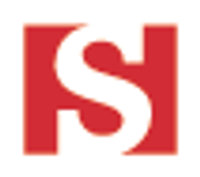
Stolt-Nielsen Ltd
OSE:SNI


| US |

|
Johnson & Johnson
NYSE:JNJ
|
Pharmaceuticals
|
| US |

|
Berkshire Hathaway Inc
NYSE:BRK.A
|
Financial Services
|
| US |

|
Bank of America Corp
NYSE:BAC
|
Banking
|
| US |

|
Mastercard Inc
NYSE:MA
|
Technology
|
| US |

|
UnitedHealth Group Inc
NYSE:UNH
|
Health Care
|
| US |

|
Exxon Mobil Corp
NYSE:XOM
|
Energy
|
| US |

|
Pfizer Inc
NYSE:PFE
|
Pharmaceuticals
|
| US |

|
Palantir Technologies Inc
NYSE:PLTR
|
Technology
|
| US |

|
Nike Inc
NYSE:NKE
|
Textiles, Apparel & Luxury Goods
|
| US |

|
Visa Inc
NYSE:V
|
Technology
|
| CN |

|
Alibaba Group Holding Ltd
NYSE:BABA
|
Retail
|
| US |

|
3M Co
NYSE:MMM
|
Industrial Conglomerates
|
| US |

|
JPMorgan Chase & Co
NYSE:JPM
|
Banking
|
| US |

|
Coca-Cola Co
NYSE:KO
|
Beverages
|
| US |

|
Walmart Inc
NYSE:WMT
|
Retail
|
| US |

|
Verizon Communications Inc
NYSE:VZ
|
Telecommunication
|
Utilize notes to systematically review your investment decisions. By reflecting on past outcomes, you can discern effective strategies and identify those that underperformed. This continuous feedback loop enables you to adapt and refine your approach, optimizing for future success.
Each note serves as a learning point, offering insights into your decision-making processes. Over time, you'll accumulate a personalized database of knowledge, enhancing your ability to make informed decisions quickly and effectively.
With a comprehensive record of your investment history at your fingertips, you can compare current opportunities against past experiences. This not only bolsters your confidence but also ensures that each decision is grounded in a well-documented rationale.
Do you really want to delete this note?
This action cannot be undone.

| 52 Week Range |
270.5
518
|
| Price Target |
|
We'll email you a reminder when the closing price reaches NOK.
Choose the stock you wish to monitor with a price alert.

|
Johnson & Johnson
NYSE:JNJ
|
US |

|
Berkshire Hathaway Inc
NYSE:BRK.A
|
US |

|
Bank of America Corp
NYSE:BAC
|
US |

|
Mastercard Inc
NYSE:MA
|
US |

|
UnitedHealth Group Inc
NYSE:UNH
|
US |

|
Exxon Mobil Corp
NYSE:XOM
|
US |

|
Pfizer Inc
NYSE:PFE
|
US |

|
Palantir Technologies Inc
NYSE:PLTR
|
US |

|
Nike Inc
NYSE:NKE
|
US |

|
Visa Inc
NYSE:V
|
US |

|
Alibaba Group Holding Ltd
NYSE:BABA
|
CN |

|
3M Co
NYSE:MMM
|
US |

|
JPMorgan Chase & Co
NYSE:JPM
|
US |

|
Coca-Cola Co
NYSE:KO
|
US |

|
Walmart Inc
NYSE:WMT
|
US |

|
Verizon Communications Inc
NYSE:VZ
|
US |
This alert will be permanently deleted.
 Stolt-Nielsen Ltd
Stolt-Nielsen Ltd
Stolt-Nielsen Ltd
Investor Relations
In the interwoven tapestry of global shipping and logistics, Stolt-Nielsen Ltd. stands as a dynamic and multifaceted enterprise, steering its course through the complex channels of chemical logistics, tank containers, and aquaculture. Founded in 1959 by Jacob Stolt-Nielsen, the company has since navigated the ebbs and flows of economic tides with astute precision. At its core, Stolt-Nielsen operates a fleet of sophisticated tankers that safely transport bulk liquids, such as chemicals and edible oils, across the globe. These specialized ships are the lifeblood of the company's revenues, ensuring secure and efficient delivery of high-stakes cargo to its customers, which include major manufacturers and industrial giants.
In addition to its shipping operations, Stolt-Nielsen has diversified its portfolio to include a thriving tank container division, providing essential intermodal solutions in the transport of chemical and food-grade products. These containers crisscross continents by ship, rail, and truck, showcasing the firm’s adaptability in a world that demands logistical diversity. Further augmenting their business model is the company's participation in aquaculture through Stolt Sea Farm, which specializes in the sustainable farming of premium seafood. This diversification not only reflects Stolt-Nielsen’s keen business acumen but also underscores its commitment to forging resilient revenue streams, enhancing shareholder value by embracing opportunities that extend beyond the port’s edge. Through this multifaceted approach, Stolt-Nielsen crafts a narrative of innovation and tenacity, leaving a distinct mark on the global maritime and logistics landscape.

In the interwoven tapestry of global shipping and logistics, Stolt-Nielsen Ltd. stands as a dynamic and multifaceted enterprise, steering its course through the complex channels of chemical logistics, tank containers, and aquaculture. Founded in 1959 by Jacob Stolt-Nielsen, the company has since navigated the ebbs and flows of economic tides with astute precision. At its core, Stolt-Nielsen operates a fleet of sophisticated tankers that safely transport bulk liquids, such as chemicals and edible oils, across the globe. These specialized ships are the lifeblood of the company's revenues, ensuring secure and efficient delivery of high-stakes cargo to its customers, which include major manufacturers and industrial giants.
In addition to its shipping operations, Stolt-Nielsen has diversified its portfolio to include a thriving tank container division, providing essential intermodal solutions in the transport of chemical and food-grade products. These containers crisscross continents by ship, rail, and truck, showcasing the firm’s adaptability in a world that demands logistical diversity. Further augmenting their business model is the company's participation in aquaculture through Stolt Sea Farm, which specializes in the sustainable farming of premium seafood. This diversification not only reflects Stolt-Nielsen’s keen business acumen but also underscores its commitment to forging resilient revenue streams, enhancing shareholder value by embracing opportunities that extend beyond the port’s edge. Through this multifaceted approach, Stolt-Nielsen crafts a narrative of innovation and tenacity, leaving a distinct mark on the global maritime and logistics landscape.





























 You don't have any saved screeners yet
You don't have any saved screeners yet
